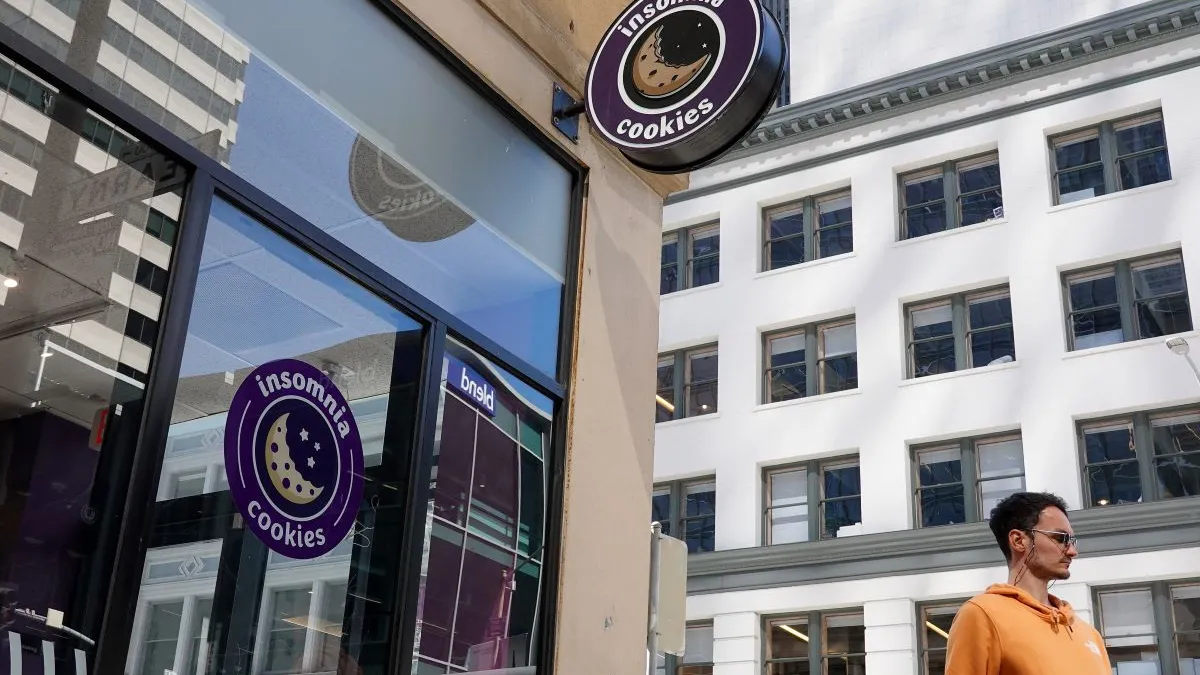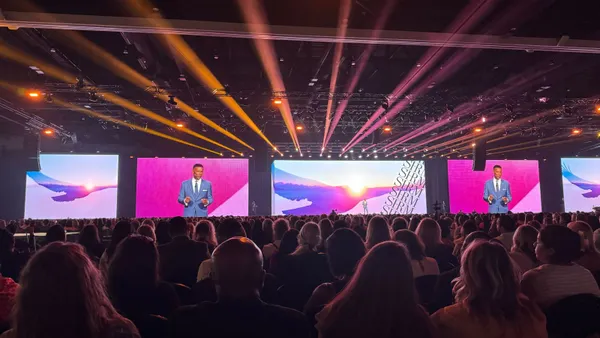In a field inundated with ideas, “disruption” and blog posts about ideas and disruption, the meaningful trends affecting HR departments nationwide can sometimes get lost.
But that’s why we’re here. HR Dive spoke to experts and professionals in the field to get a sense of the top ten trends facing HR right now – presented in no particular order.
1. Recruiting in a job seeker’s market
Hiring is up again, said John Breman, a managing director at Towers Watson. But only certain skill sets in each industry are hot right now.
“Even during the recession, we saw this,” Breman said. “Every organization has certain jobs that are problematic right now. In hospitals, it’s doctors and nurses. Utility, it’s line engineers. In tech, software engineers.”
With no short term solution in sight for these employment concerns, employers need to focus on retaining the talent they do have by committing to workforce development, according to the Society of Human Resource Management. Potential employees want to know that a company won’t be a dead-end for their career, meaning interviewers should emphasize career paths available at their companies. Transparency and continued communication about career progression and what that means for their teams should be top of mind for managers.
2. Paid time off is taking center stage
Paid time off – particularly parental leave and sick leave – has garnered significant attention in the news cycle. The White House recently drafted a paid sick leave order for federal contractors, reflecting the Democratic Party’s interest in instituting such policies nationwide. Multiple companies (including Netflix, Adobe and Nestle) have created headlines with their improved paid parental leave policies.
While paid leave has become a weapon in the talent war, said Ray Baumruk, a partner in employee research and insights at Aon Hewitt, it’s also been part of the push to increase diversity within the workforce.
However, many employers PTO policies are still patchwork and inscrutable, Baumruk added, so employers have “a great interest” in simplifying their policies.
“One of the reasons employees don’t use their leave is that they don’t know about it,” he said.
3. The rise of “shared accountability,” wellness and self-funded healthcare plans
As the "Cadillac Tax" of the Affordable Care Act looms, many employers are hunting for cheaper ways to offer health benefits without shorting quality. Wellness programs, including onsite health centers, and self-funded health benefits plans are gathering steam largely because they put the onus of responsibility on the employee rather than the employer.
The Cadillac Tax is expected to hit 42% of employers within a decade if they do not make meaningful changes to their employer-funded plans. Encouraging wellness not only makes employees happier, but it reduces the amount of healthcare they’ll need to receive. And self-funded plans, in theory, should increase employee choice and plan flexibility.
Since moves to abolish the tax entirely face an intense uphill battle, employers need to be proactive if they want to avoid it altogether. Better to act now than later.
4. Raises are out, variable yearly bonuses are in
One of the biggest overall trends in HR is the steep drop of the yearly fixed salary raise and the increase of variable bonuses each year.
Recent data from Aon Hewitt claims that raises will modestly increase from 2.9% to 3% in 2016 – but these numbers are about at least a full percentage point lower than they were two decades ago.
“You wouldn’t have to go back far to see an 8% salary raise and 0% for variable pay,” Ken Abosch, broad-based compensation practice leader for Aon Hewitt, told HR Dive. In comparison, variable pay increases average as high as 12.9%, a sharply noticeable trend, Abosch said.
Employees are largely on board with the trend, he added, feeling that they have “greater control” over their bonuses – which often reflect performance – than yearly salary raises. The move to variable bonuses also reflects the more holistic way companies have come to view their compensation and benefits schemes in the last five to seven years, said Breman. Companies with strong healthcare programs or awesome workplace culture can perhaps afford to offer slightly lower salaries, for example. It all comes down to what matters to employees.
5. The end of annual reviews
The annual review is dying a prolonged but certain death, thanks to app-enabled technology and – you guessed it – millennials.
Employers are now opting for systems where feedback is given regularly rather than annually. Many view the current system as egregiously cumbersome and expensive with little benefit to employee or employer. Employees in particular are not valuing the process like they used to, Breman said, especially as millennials and Gen X become the majority in the workforce. Everything else in their life is tech-enabled and immediate. An analog performance review system doesn’t line up with what they expect in a modern workplace.
Now that the technology exists, change is happening.
“10 years ago you never could have done some sort of app driven feedback,” Breman added. Now, even companies like GE are ditching their legacy systems for more lithe, consistent programs enabled via mobile.
But be careful with new alternatives, experts advise. Any sort of performance review should remain objective and work to minimize bias – which often means collecting more data, not less.
6. Workplace diversity – actions, not just words
It’s an HR cliché to say that the tech industry has a diversity problem. But they (and, in turn, other industries) have been taking a hard look at just who makes up their workforces and what they can do to shake up the old paradigms.
One of the biggest and potentially most effective ways to increase diversity may be Big Data, according to a couple sources.
Studies say that algorithmic hiring – using data gleaned from pre-hiring tests to discern which candidates would be best – vastly increased non-white hires for certain industries. But experts warn that other biases can be built into the algorithms. Perhaps more importantly, businesses actually have to want to hire a diverse workforce for such a program to work.
Workplaces need to pay attention to “experiential and intellectual” diversity, too. Employees with different life experiences – be it gender, ethnicity or otherwise – contribute to a strong “talent mix” that strengthens the company as a whole.
“Employers will need to find sources of talent that are not traditional,” Breman said. That means recruiting at historically Black colleges and universities (like Google) and specifically hunting for places that others may not be recruiting.
7. EEOC enforces more discrimination, compliance cases
The EEOC has been markedly active as of late, creating anxiety over compliance for many HR managers. Fairly new EEOC Chair, Jenny Yang, and current General Counsel, David Lopez, have said they will focus on “larger, more systemic” cases in the near term – meaning enforcement is going to be on the rise.
Religious accommodations have received particular attention in the news lately with the EEOC v. Abercrombie & Fitch case recently decided by the Supreme Court. Employers should evaluate dress codes and other “neutral policies” that “could conflict with current or potential employees’ religious practices,” reports the National Law Review, or they could get dinged.
Additionally, LGBT rights have been gaining national attention since the legalization of same-sex marriage nationwide. The EEOC ruled in July that federal LGBT workers are a protected class under Title VII, and the Equality Act, which would make sexual orientation and gender identity federally protected classes, has gained considerable backing from many large American employers.
8. From contractors to employees
The contractor vs. employee problem continues to hound many on-demand service companies. The ultimate outcome of this debate could go either way, especially as more and more workers find their niche as freelancers, but many on-demand service apps have begun to hire employees rather than contractors. Many see the added cost as “worth it,” especially in light of recent lawsuits.
Increased vigilance by employers may be necessary, regardless. The Department of Labor recently tightened the definition of contractor vs. employee. Generally, a worker needs to “be in business for himself or herself” to be an independent contractor. Any workers who are economically dependent on the employer should be treated as an employer, according to these guidelines.
9. Managing a split generation workforce is more relevant than ever
Millennials are now the majority generation in the U.S. labor force, but Gen X and Baby Boomers still remain, prompting employers to ask how they can accommodate all members of each generation while also still maintaining a forward momentum.
Thing is, the needs between each generation aren’t that sharply different, said Breman. Both millennials and Gen X have been unsatisfied with the ways their employers communicate, for instance. They desire “instantaneous” access to information, so using mobile apps and new messaging tools beyond email may be key ways to engage younger employees. Baby Boomers are more adaptable to these new pieces of tech than some may think, said Josh Ostrega, COO and founder of WorkJam, an employee-scheduling app. In terms of mobile phone adoption, they tend to be right on par, he added.
And while millennials tend to be “digital natives” and more idealistic, Baby Boomers want much of the same out of their work: a chance to work hard and to make the world a better place, according to 99u.
Regardless, as workplaces evolve, this discussion will come up again and again. Having open lines of communication will unite these disparate age groups. Remind employees that learning goes both ways – no generation is automatically the boss.
10. Mobile HR technology and gamification are on the rise
Speaking of generational differences: HR tech accessibility has been a flashpoint in this discussion.
A lot of HR tech “sounds great, but is extremely cumbersome to implement,” Ostrega told HR Dive. Some HR tech is for the employer only – leaving employees, who could benefit from the tech, in the cold.
“Companies are realizing that you have to understand what the technology will do for you and if it will help everyone on your workforce as a whole,” he said.
In response, accessible apps and gamification of HR practices – particularly corporate learning – have gained popularity. Ostrega’s WorkJam is an app that both employers and employees can access via mobile phones or a platform at work, engaging both sides in a meaningful way. QuizUp recently announced a new initiative to “change corporate learning” with QuizUp at Work by using trivia-like questions to help engage employees in learning.
Other popular ways to engage aspects of gamification: re-structuring onboarding and encouraging daily brand interactions through social media contests and friendly competition.



















